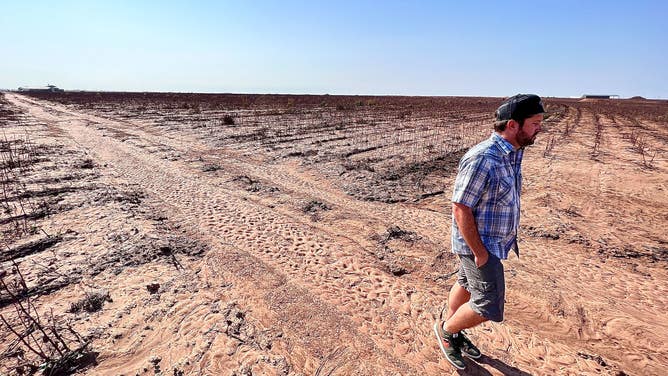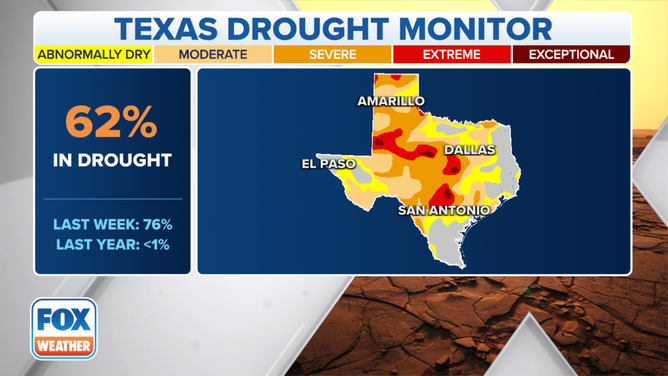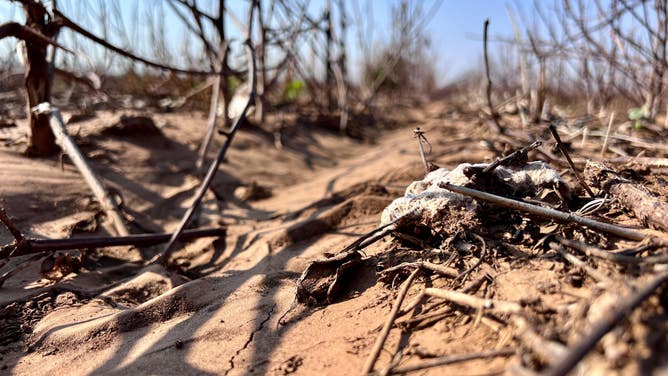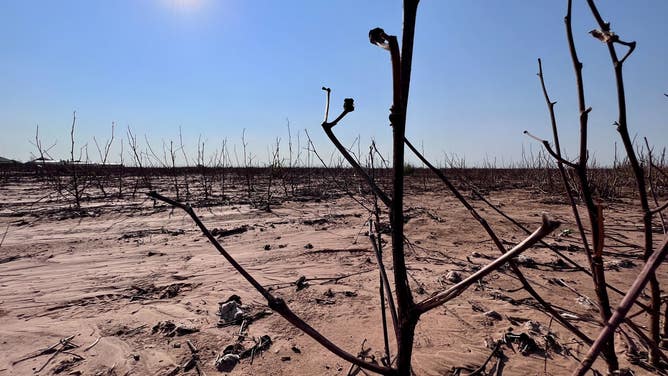Farmers struggle as Texas cotton fields decimated by extreme heat, drought
The Texas Panhandle produces more than a third of American cotton, but the state's farmers are worried they'll see the worst cotton crop in years.

Texas cotton farmer Thomas Kennedy has lost 100% of his 10,000 acres of cotton.
(Robert Ray / FOX Weather)
LUBBOCK COUNTY, Texas – A majority of Texas is experiencing some level of drought, and those conditions are costing farmers their cotton crop.
The Texas Panhandle produces more than a third of American cotton, but the state's farmers are worried they'll see the worst cotton crop in years.
The production has been decimated by drought and extreme heat this year, costing Texas High Plains farmers and other agricultural industries at least $2 billion, according to reporting by Jayme Lozano with The Texas Tribune.
"It's pretty catastrophic," said Kody Bessent, CEO of Plains Cotton Grower. "This has been one of the worst years we have seen on record since 2011."
HOW TO WATCH FOX WEATHER ON TV

A majority of Texas is experiencing some level of drought, and those conditions are costing farmers their cotton crop.
(FOX Weather)
That year, more than a dozen states and thousands of farmers and ranchers experienced a historic drought.
"West Texas is the biggest cotton patch in the world, and that's because as far as the heat that we have and the rainfall amounts that we receive," third-generation Texas cotton farmer Thomas Kennedy said.
Cotton is the state’s largest agricultural export and is responsible for thousands of jobs across many sectors.
"We produce 10,000 acres roughly, and we will have no yield, absolutely zero this year," Kennedy said.
The losses are extraordinary. To put this in perspective, the island of Manhattan in New York is just under 14,500 acres of land.
DINOSAUR TRACKS UNVEILED IN TEXAS BY EXTREME DROUGHT CONDITIONS
Fifteen miles from Kennedy's scorched acres, across dusty roads with layers of sand, are fields that look like a deserted beach as the sun beats down, and the winds kick up the particles.
While much of Texas has seen rain during the past few weeks, it's two months too late for this year’s crops, Lozano reports.
"And as you can see, what we have is really small bulbs, about a third of the size of normal," said Walt Hagood, who has been farming cotton for 43 years in Texas. "Out here in the cotton field, the two biggest risks that we have are markets and the weather. Now you add this high input cost, and you got three big risks."
For Hagood, the rising cost of supplies because of national inflation is that troublesome input cost.
According to Lozano, once crop insurance adjusts the value of the fields next month, many cotton farm productions will be considered a loss. Across this region, it’s expected that only 2 million acres of cotton will be harvested – slightly less than half of last year’s yield.




